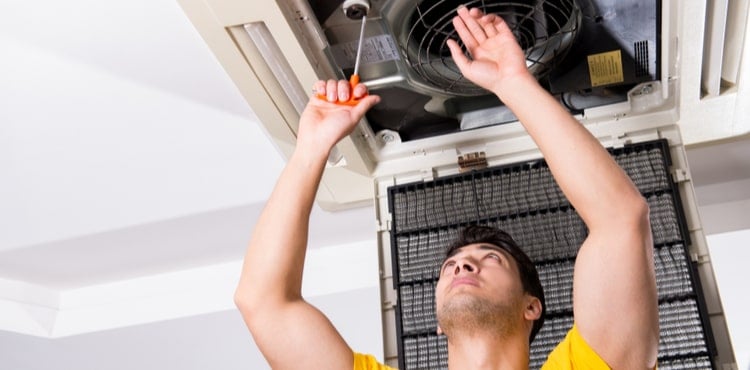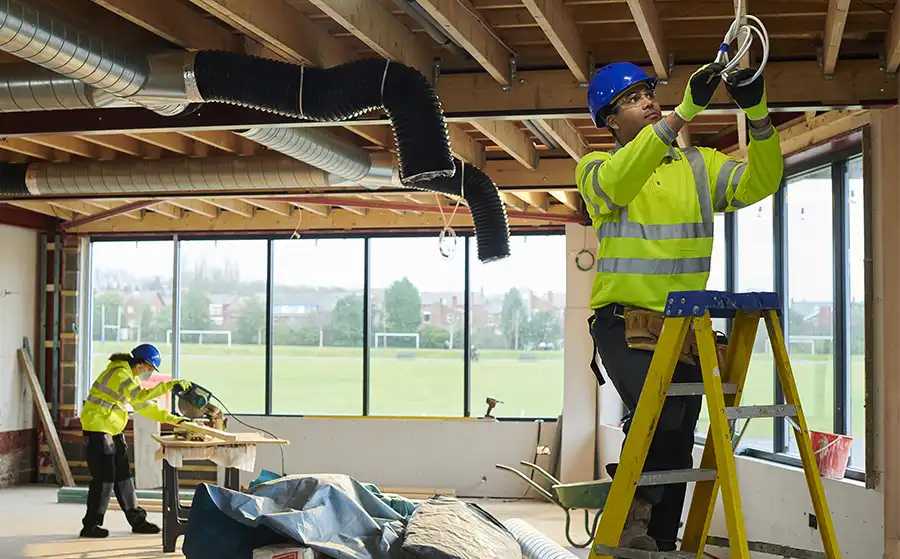HVAC Inspection Canoga Park Tips for Hiring an HVAC Contractor
Indoor air quality significantly affects your health and overall well-being. Understanding how to examine indoor air quality at home can empower you to create a more healthy living surroundings. Most people spend a considerable period of time indoors, typically more than they understand. This makes it essential to make sure that the air you breathe is clear and free from pollutants.
Various elements can affect indoor air quality. Common pollution embrace mud, pet dander, mold spores, unstable organic compounds (VOCs), and family chemical compounds. The accumulation of those pollution can result in short-term discomfort and long-term health issues. Symptoms could embrace headaches, irritated eyes, fatigue, and respiratory problems. Identifying these pollution is the primary step in the path of bettering the air you breathe.
The first step in checking indoor air quality involves being aware of any odors or noticeable adjustments in the air. Unpleasant or robust odors can point out an underlying problem. A lingering musty scent may level to mold development, whereas sharp chemical odors can hint at the presence of VOCs from cleansing merchandise or paints.
HVAC Services Canoga Park HVAC Company - HVAC Contractor
Using a visible strategy is another efficient method to assess indoor air quality. Inspect areas prone to moisture, similar to loos and kitchens, for indicators of mold development. Look for peeling wallpaper, dark spots on partitions, or water stains, as these can point out humidity or leaks. Additionally, check areas where mud can accumulate, like vents, baseboards, and cabinets.
Checking humidity levels is crucial for sustaining good indoor air quality. Excess humidity can promote the growth of mildew and mud mites, while low humidity can lead to dry skin and respiratory discomfort. A hygrometer may help you monitor indoor humidity. The ideal indoor humidity degree should vary between 30% and 50%.

Heat Pump Services Canoga Park Plumbing & HVAC Contractors
Another methodology to verify indoor air quality is to judge the efficiency of your air flow system. Proper air flow helps dilute indoor pollutants. If your home lacks proper airflow, consider putting in an air exchange system or utilizing exhaust followers in essential areas like kitchens and loos. This action not solely helps remove stale air but additionally brings in fresh air from outside.
The type of furnishings and supplies used in your home can contribute to indoor air quality points. Some furnishings, notably older gadgets, may emit VOCs that affect air quality. When purchasing new furnishings, go for low-VOC or no-VOC options to reduce potential sources of indoor air air pollution.
Plants can play an important role in improving indoor air quality. Certain houseplants are recognized to soak up dangerous pollutants. Spider plants, snake plants, and peace lilies are a few examples that thrive indoors and promote higher air quality. However, make positive that the crops are appropriate for your living environment to keep away from any unintended penalties.
Central Air Installation Canoga Park HVAC Company - HVAC Contractor
Regular maintenance of heating and cooling methods is vital for air quality. Filters in HVAC systems accumulate mud and other particles over time. Cleaning or changing these filters regularly can improve airflow and reduce contaminants circulating through your house. Also, contemplate scheduling professional inspections to ensure techniques are functioning optimally.
Carbon monoxide detectors and radon testing are different important components of indoor air quality checks. Carbon monoxide is a colorless, odorless gas that can be deadly if present in high concentrations. Installing detectors in key areas and following security guidelines helps ensure you stay protected.
Radon, another invisible gas, can seep into homes and poses severe well being risks. A simple radon test can determine if levels are elevated. Taking corrective actions, such as improved air flow or sealing cracks, can mitigate this risk and improve general air quality.
Once you establish sources of indoor air pollution, proactive measures can significantly improve indoor air quality. Regularly dusting surfaces, vacuuming carpets, and cleaning upholstery contribute to lowering allergens. Implementing a no-shoes policy inside your home also can reduce dirt and contaminants tracked indoors.
Heating Installation Canoga Park Commercial HVAC Contractor
Air purifiers could be efficient instruments for enhancing air quality. They work by filtering out harmful particles and bettering air flow. When choosing an air air purifier, consider the scale of the room and the kind of filter it uses. HEPA filters are particularly effective in capturing fantastic particles and allergens.
An consciousness of your living environment is crucial for detecting hidden pollution sources. Common family merchandise, such as cleaners, pesticides, and air fresheners, can introduce dangerous chemical substances into your personal home. Opting for natural alternatives can lessen your exposure to these substances and promote a more healthy ambiance.
By implementing systematic checks and becoming proactive about air quality, you presumably can considerably improve your indoor surroundings. Simple steps such as bettering ventilation, utilizing air purifiers, and sustaining humidity levels create a holistic approach to indoor air quality.
Duct Cleaning Canoga Park Find a Local Plumber or Licensed HVAC Contractor

Taking these measures will permit for a safer, extra pleasant dwelling setting. Your well being, comfort, and total quality of life depend on the air you breathe. Understanding the way to verify indoor air quality at home equips you with the knowledge to reduce dangers and create a more healthy house for you and your beloved ones. Knowledge is power in terms of maintaining the standard of the air in your house.
Thermostat Installation Canoga Park What Is an HVAC Contractor? (2024 Guide)
- Utilize an indoor air quality monitor to evaluate ranges of pollutants, humidity, and temperature in real-time.
- Test for unstable natural compounds (VOCs) by using passive sampling devices, which may help determine sources of indoor pollution.
- Measure particulate matter with a laser particle counter, offering insight into dust, pollen, and other airborne particles.
- Conduct a carbon monoxide test using a dedicated sensor to make sure ranges stay under the secure threshold.
- Observe the presence of mould by checking for dampness or musty smells in hidden areas like basements or loos.
- Regularly check humidity levels with a hygrometer, aiming for a balanced range of 30-50% to forestall mold growth and improve consolation.
- Implement home air quality exams that target radon detection, significantly in basements or ground-level rooms.
- Monitor air quality modifications after utilizing cleaners or airborne products, noting potential reactions or discomfort to pinpoint sources of irritation.
- Plan for normal ventilation by opening home windows or utilizing exhaust followers to improve airflow and reduce indoor pollution.
- Become conscious of and limit the use of synthetic supplies in furnishings and decor that may off-gas harmful chemical substances.undefinedWhat is indoor air quality and why is it important?
- Local HVAC Contractor Canoga Park
Indoor air quality refers again to the condition of the air inside and round buildings. It is essential as a result of poor indoor air quality can lead to varied health issues, together with respiratory problems, allergic reactions, and other illnesses. Maintaining good air quality promotes total well-being and luxury.
How can I tell if my indoor air quality is poor?
Zone Control HVAC Canoga Park Family-Owned & Operated HVAC Contractor
Signs of poor indoor air quality embody persistent odors, seen mould growth, excessive dust, and well being symptoms corresponding to complications, fatigue, or respiratory issues. If you discover these indicators, it’s sensible to evaluate your indoor air quality further.
What instruments can I use to examine my indoor air quality?
Furnace Repair Canoga Park Find a Contractor
You can use several instruments to evaluate indoor air quality. Air quality monitors can measure ranges of pollution like particulate matter, risky natural compounds (VOCs), carbon dioxide, and humidity. Simple DIY tests for mildew or allergens are also available.
How typically should I verify the indoor air quality in my home?
HVAC Regulations Canoga Park Hire An HVAC Contractor
It’s really helpful to examine indoor air quality a minimum of annually. However, you should monitor extra frequently if you discover any signs of air quality points or after renovations, which might enhance airborne pollutants.
What are frequent indoor air pollution I should be conscious of?
HVAC System Replacement Canoga Park Family-Owned & Operated HVAC Contractor
Common indoor air pollution embody particulate matter, VOCs from paints and cleansing products, mould, radon, carbon monoxide, and dirt mites. Awareness of those pollutants may help you are taking steps to mitigate their presence.
How can I improve the indoor air quality in my home?
Air Handler Installation Canoga Park HVAC Company - HVAC Contractor
To improve indoor air quality, ensure correct air flow, use air purifiers, frequently change air filters, minimize the utilization of artificial chemical compounds, and preserve a clean setting to reduce mud and allergens.
Are plants efficient in enhancing indoor air quality?
- Eco-Friendly HVAC Canoga Park
Furnace Repair Canoga Park Find a Contractor
Yes, sure houseplants may help improve indoor air quality by absorbing toxins and growing humidity. Popular air-purifying plants embody spider vegetation, peace lilies, and snake crops. However, be conscious of allergy symptoms or sensitivities some crops could cause.